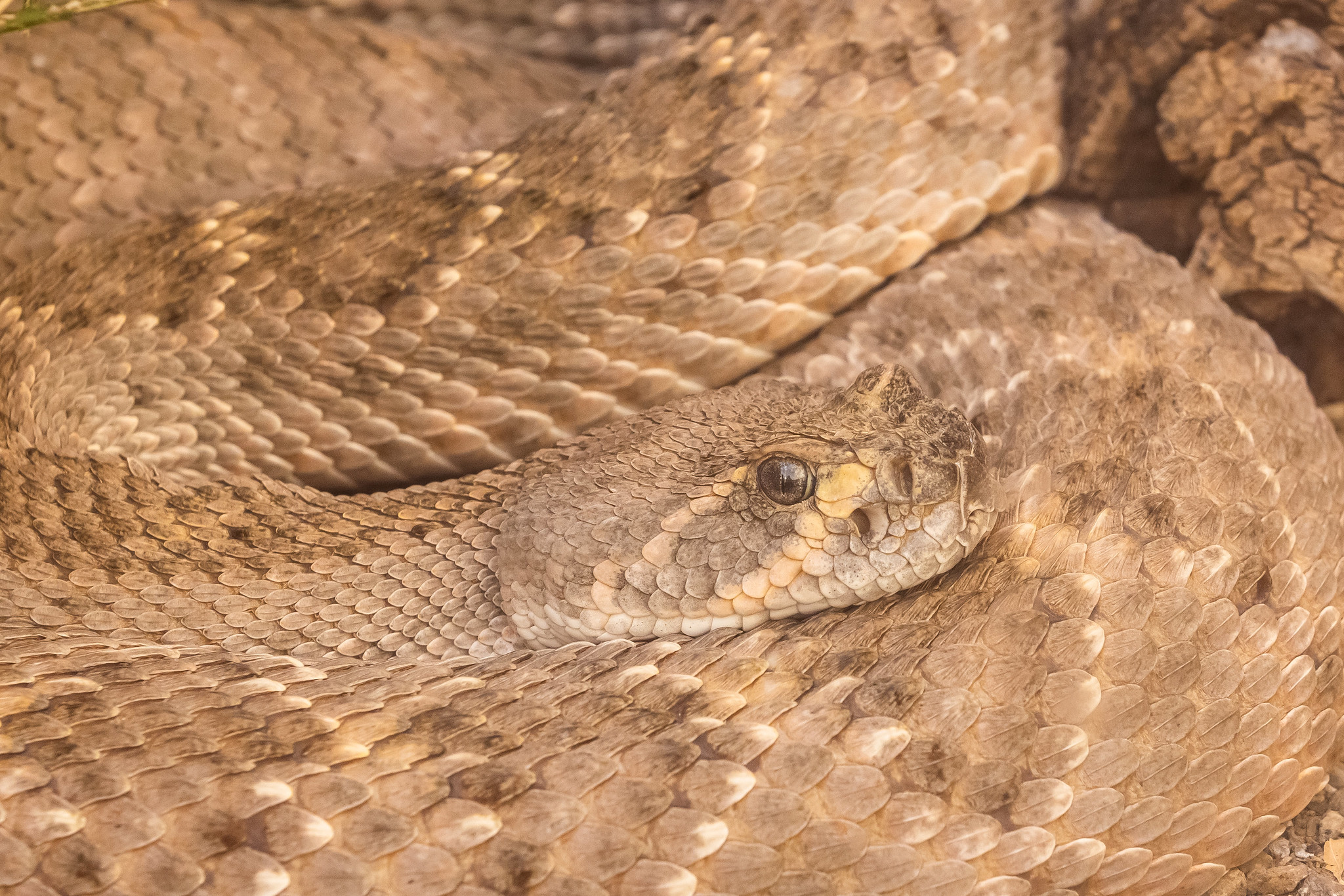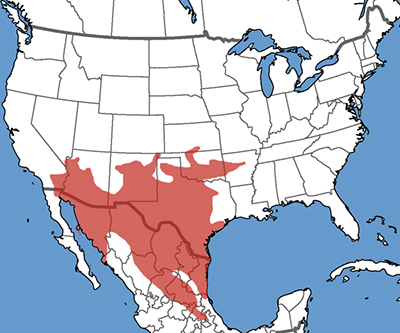Western Diamondback Rattlesnake

About
Buzzworms. Desert noodles. Rattlesnakes. No doubt you have wondered about these compelling creatures that call the Sonoran Desert home. But what makes them so fascinating? And why are they super important? Let's find out!
Adaptations
Western diamondbacks are pit vipers. This means that they have a heat sensing mechanism (loreal pit) located behind each nostril that can detect differences in temperature, sometimes differences that are only a fraction of a degree apart. The heat given off by an animal is detected by the snake helping it to determine predator from prey.
Rattlesnakes are reluctant to strike. Making their presence known (by movement or by rattling) endangers the snake. Their best defense is camouflage. If pressed (or startled) and needing to defend itself, a rattlesnake may strike. The strike happens in less than a second. Venom is stored in venom glands that can constantly produce liquid (just like saliva glands). Venom is injected through fangs and can be extremely dangerous, especially for young or compromised people. Luckily, there is a general antivenom for rattlesnakes.
Diamondbacks range in size from 3 to 5 feet long with a few reaching 7 feet long and can live approximately 15-20 years in captivity.
Food Web
Rattlesnakes will eat mice, rats, rabbits, gophers, ground dwelling birds, lizards and other small animals.
Rattlesnakes are eaten by eagles, hawks, roadrunners, kingsnakes, coyotes, bobcats, and foxes.
Additionally, when deer, antelope, cows, and horses are startled by a snake they may try to trample it.

Habitat and Range
This snake is considered a generalist, which means that it isn't too picky about its habitat. It can be found living in deserts, grassy plains, forests, rocky hillsides and areas along the coast. It lives in elevations from below sea level up to 6500 feet (2000m).
This species ranges throughout the southwestern United States (Arizona, California, New Mexico, Oklahoma and Texas) and the northern half of México.
Diamondbacks will often spend the hot daytime hours coiled in the shade of low-growing shrubs, piles of natural or artificial debris, or rocks. They will also utilize underground burrows of other animals. In the winter, they retreat into caves or similar places to hibernate.

Family Life
Unlike some snakes that lay eggs, diamondbacks give birth to live young around the monsoon season or end of summer.
Very few reptiles exhibit parental care with their young, but it has been documented that female rattlesnakes stay with their young for about a week, or until the babies shed for the first time.
Fun Facts
- The rattle of the rattlesnake is made up of a protein called keratin (the same protein that your hair and fingernails are made of). A new segment is added each time a rattlesnake sheds, but they can shed at different rates. Because of this, and the fact that segments can break off, you really can't tell a snake's age by counting the segments.
- A rattlesnake can move its rattle back and forth 60 or more times per second. But the amazing thing is a snake chooses when to rattle. Most of the time they stay silent and still, clearly trying to hide from the sun, from predators, or even from humans.
- Rattlesnake vs Gopher Snake
Conservation
Currently, western diamondback rattlesnakes are not threatened or endangered.
At The Museum
View on Map

The Western Diamondback Rattlesnake can be found in the Reptile Room, and in the Desert Grasslands.
Additionally, it can sometimes be seen during the Live Animal Theater Program.